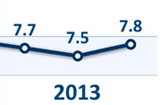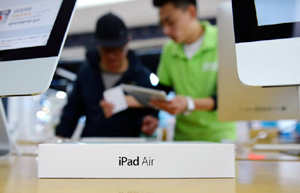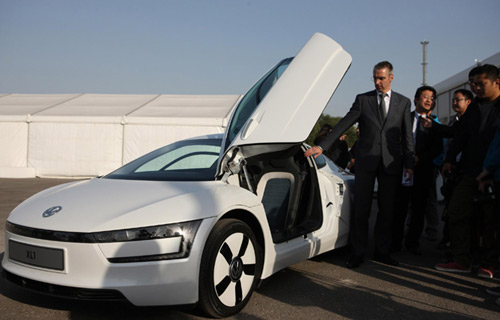Apple losing ground to home brand in China
Updated: 2013-08-31 14:39China is the largest smartphone manufacturer in the world. Its domestic demand for smartphones is surging as traditional mobile users switch to more advanced handsets. But most of the new demand is not for the latest gadgets from Apple or Samsung.
Apple's loss is Chinese brands' gain. Instead of an iphone, many choose cheaper home-grown smartphones when they upgrade from feature phones.
"Xiaomi's price is good for average consumers. I can accept the price. The quality is not bad either. Web streaming is very fast. Thats why I'm getting one."said a consumer.
Lower prices, more geared to local needs. Millions of consumers like Mr Liu have the same idea. That's why Apple's share of China's smartphone market was halved in the second quarter--and the US tech giant is trying to catch up.
"Premium smartphones has less than 20 percent of the market share. The majority of demand in China come from mid-tier and low end smartphones. Apple sees this dynamic as its older discounted-ones gains popularity here. They are already cooperating with Chinese carriers to come up with a cheaper model of iPhone."said Jane Zhang, tech consumer analyst of Gartner INC.
By 2015, four out of every five cell phones sold will be smartphones in China, almost double the number right now. According to iRESEARCH, more than half of the smartphones sold will be less than 1000 RMB or around 150 USD. China's no.6 smartphone maker -- Xiaomi, just launched a phone priced at under 800 yuan.
"Low end smart phones account for a third of the entire smartphone market share. It will be around 100 million by the end of this year, and that number will double by 2016. This demand comes from 3rd and 4th tier cities as they upgrade their feature phone to low-cost smartphones."said Will Tao, consulting director of iResearch Consulting Group.
A key growth driver -- is rural spending on technology, thanks to higher incomes. Gartner forecasts the technology market in rural China will be worth 135 billion dollars by 2022, similar size to the urban market today. Analyst say tech firms must adapt their product mix to suit rural consumers.
























